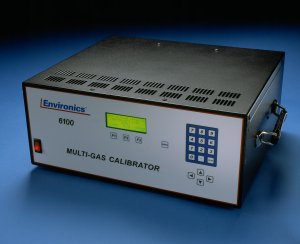
Trace level gases are those that are present in small concentrations, such as one ppb or lower. Analyzing these tiny concentrations can be challenging and require specific processes. This article will outline and explain some of these trace level gas analysis processes.
What is Gas Analysis
Gases can be extremely difficult to detect as they are odorless and often invisible to the human eye and trace level gases are even harder to detect due to their small quantities. This is why researchers have developed important techniques to sense the types of gases present in the environment.
Trace level gas analysis in particular is extremely important for controlling the global climate in the future.
Trace Level Gas Analysis with Mass Spectrometry
In mass spectrometry, the samples are slowly heated from a low temperature to a higher temperature. After this, they emit vapors or gases using decomposition or desorption. These gases have unique thermal effects, undergoing mass losses and these changes in mass are monitored closely.
Trace level gas analysis detects gaseous compounds within the environment at low concentrations. Mass spectrometry is used to detect trace levels of gas because it is highly sensitive and selective. The efficiency of mass spectrometry has been increased by incorporating inlet methods or processes of ionization. Ionization of samples followed by detecting negative ions could bring detection range enhancement.
Trace Level Gas Analysis Using Gas Chromatography
Gas chromatography is a technique that is widely used in analytical chemistry. Particularly, gas chromatography is used for separating and characterizing compounds that may be vaporized without decomposition. The method detects the purity of a substance and separates components from a mixture.
Many gas detectors are integrated with gas chromatographs such as flame ionization detectors, thermal conductivity detectors, and mass spectrometers.
Trace Level Gas Analysis Challenges
Using gas chromatography for gas analysis can be challenging in terms of the calibration of detectors. Every type of gas analysis system uses unique principles and needs to be calibrated to detect trace level gases in real-time with high selectivity.
Trace level gas analysis with gas chromatography needs specific gas mixers to create a test mobile phase with exacting concentrations. This is subject to the application area that the trace level gas analysis occurs.
Environics has extensive experience in producing both standard and ultra-high purity diluters, gas mixers, and dividers for use in gas chromatography calibration. Their Model 4000 systems are more accurate than standard thermal mass flow controllers and offer custom options for trace level calibration including glass lined or heated flow path, welded gas path and permeation. This system is well suited to trace level gas analysis, has a long lifespan and high repeatability.
To find out more about trace level gas analysis and how Environics calibrators help to make the process more accurate, visit their website.

